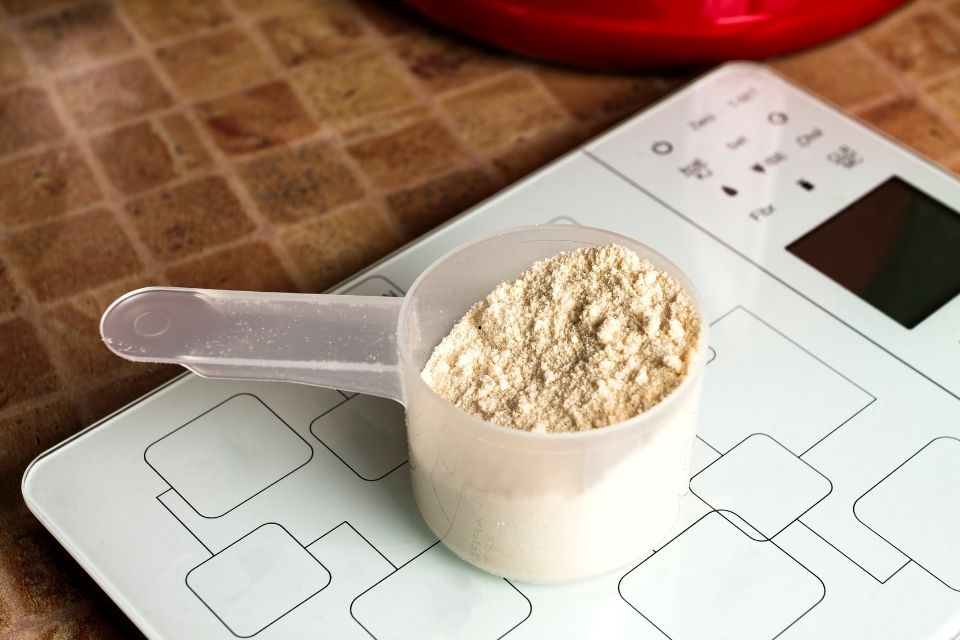If you’ve researched bodybuilding and muscle gain, you’ve probably heard of cutting.
This strategy is widely used by athletes and gym-goers who want to reduce body fat percentage and highlight muscle definition achieved during the muscle-gaining (bulking) phase.
But what exactly is cutting? It’s a period focused on fat loss while preserving as much lean mass as possible.
This requires adjusting diet, training, and even rest to create the ideal conditions for maintaining muscle while the body uses fat as an energy source.
Read more: Bulking and Cutting: What They Are and How to Do It Right
The goal of cutting
Cutting isn’t just about “losing weight.” The goal is to reduce fat in a controlled way to reveal the muscles already built.
It’s very common to do cutting right after a bulking phase, where there was a caloric surplus for muscle gain but also some fat accumulation.
The main goal is to maintain strength and muscle size while lowering body fat to levels that allow for greater definition.
How cutting works
For cutting to be effective, three factors need to align:
- Controlled calorie deficit: eating fewer calories than your body burns, without extreme restriction that leads to muscle loss.
- High protein intake: essential to preserve lean muscle mass.
- Proper training: maintaining muscle stimulus and including exercises that help increase calorie burn.
Diet during cutting
A cutting diet is strategic. Key points include:
- Proteins: lean meats, eggs, fish, chicken, yogurt, legumes
- Carbohydrates: prioritize complex sources like brown rice, sweet potatoes, oats, quinoa, adjusting amounts based on energy expenditure
- Healthy fats: olive oil, nuts, avocado, coconut oil in moderate amounts
- Fiber: vegetables and fruits to maintain satiety and good digestion
Many people choose to split meals into 4–6 portions throughout the day to control hunger and maintain energy.
Training during cutting
Training during cutting aims to maintain muscle mass and increase calorie burn. It typically includes:
- Strength training: keep loads similar to those used in bulking to signal the body to preserve muscle
- Moderate to intense cardio: running, cycling, HIIT, or incline walking to boost fat burning
- Interval training: increases intensity and calorie burn in less time
Difference between cutting and bulking
- Bulking: caloric surplus phase focused on muscle gain (with some fat gain)
- Cutting: caloric deficit phase focused on fat loss and muscle preservation
Many alternate between these phases throughout the year to optimize physique development.
How long cutting lasts
Cutting can last anywhere from 6 to 16 weeks, depending on how much fat needs to be lost and starting point. The more gradual the process, the higher the chances of preserving muscle mass.
Common mistakes in cutting
- Extreme calorie restriction, leading to muscle loss
- Excessive cardio while neglecting strength training
- Not consuming enough protein
- Rushing results and harming health
- Not getting enough rest
Tips for an effective cutting
- Plan your diet based on your real caloric expenditure
- Adjust carb intake according to training intensity
- Include protein in every meal
- Stay hydrated
- Track your progress and make adjustments as needed
Expected results
When done correctly, cutting can result in a more defined appearance, more visible muscles, and a balanced physique.
It can also improve endurance and overall energy, as reduced fat makes movement easier and less tiring.
Personalize your workouts!
Cutting is a powerful strategy for those seeking muscle definition and body fat reduction, but it requires planning and discipline.
It’s not just about eating less, but about adjusting workouts, diet, and rest to preserve muscle.
If you want to follow a safe and effective cutting plan, the Befit app is your ally.
With personalized workouts, diet suggestions, and progress tracking, it ensures each stage of your journey is a success. Download it now and start transforming your body.








